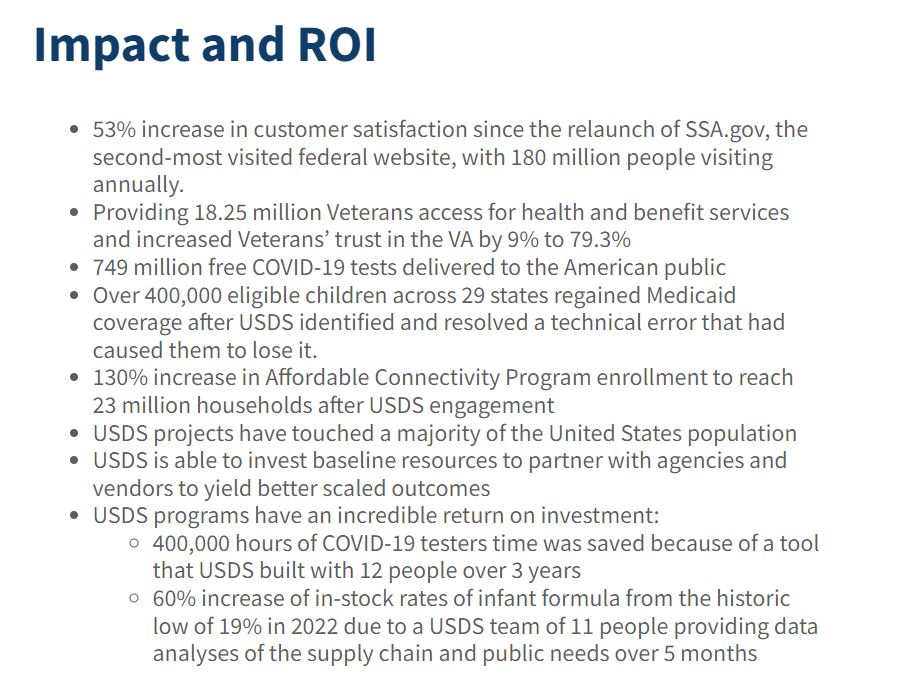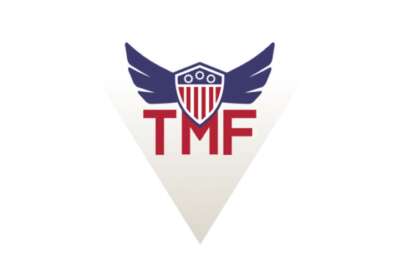USDS measures its impact in longevity, not just raw numbers
Mina Hsiang, the administrator of the USDS, said its recently-released annual report highlights the office’s impact in real numbers and success stories.
The impact of the U.S. Digital Service is difficult to measure in real numbers or data sometimes.
Sure, USDS’ work with the Social Security Administration to improve its website and customer satisfaction saved an estimated $285 million over five years in infrastructure costs.
But the true measure of USDS comes in ways that don’t always lend itself to numbers, said Mina Hsiang, the administrator of the USDS.

Mina Hsiang is the administrator of the U.S. Digital Service. (Photo Credit: Kathy Pham/USDS)
“Every single day that I work with each of our agencies, we get to see the tremendous shifts as a result of small coherent interdisciplinary teams of feds, USDSers and contractors working together can really make these changes. I think it moves everyone’s frame of expectation for how things should be able to shift right,” Hsiang said on Ask the CIO. “The people who rely on Medicaid for their health care and the extent to which the continuity of our health care can sometimes be subjected to bugs and small changes in technical systems that aren’t what the states intended, but aren’t the kind of thing that most of us get to see because technology lives inside of a black box. It is just really nice to be able to share the human, the efficiency impacts of a lot of the work we get to do. So being able to help states preserve continuity of healthcare coverage for 5 million people who really deserved it is an incredibly meaningful number to be able to put a pin on something that feels like a very wonky, like code change, and working through of like technical requirements in collaboration with policy.”
USDS’ annual report tries to detail its impact through stories, examples and other approaches than pure data.

Hsiang said just because cost savings or avoidance data isn’t obvious, it doesn’t mean the organization impact isn’t real to dozens of agencies and millions of citizens.
One example of USDS’ impact is the Digital IT Acquisition Professional Training Program (DITAP). It has trained more than 900 federal acquisition workers across more than 50 agencies on how to buy and manage technology acquisitions. The Office of Federal Procurement Policy had set a 2022 deadline to get all contracting officers who buy technology trained. It’s unclear if OFPP and agencies met that deadline, but DITAP is well regarded as a success in the community.
USDS collaborated on new hiring program
“It has a major hands-on component where the students come in and work on digital services programs and procurements with us sometimes and with agencies. It’s a really practical education, and it means that there are DITAP graduates that we get to work with across government who can be doing a better job of working with contractors and vendors on building out digital services,” she said. “DITAP is a great program, and we are actually refreshing and continuing to update some of that curriculum right now.”
OFPP USDS launched the DITAP program in 2015 through Challenge.gov. The two agencies and the Office of Personnel Management recently built on the concept of DITAP with another challenge to improve how agencies hire and train technology workers.
“USDS, PPM, and OPM aim to create a specialized and immersive training and development program for federal hiring professionals so that they can better understand the rapidly-changing market for technology talent and learn how to implement and scale modern practices for recruiting, implementing hiring authorities and flexibilities, and candidate management at their agencies,” the agencies stated in the challenge.
USDS, OPM and OFPP are about to move into Phase 3 where the Phase 2 winner, Mediabarn, will receive $100,000 to implement at pilot.
$10M rescission ‘disappointing’
Hsiang said DITAP and other examples of how USDS doesn’t just come into the agency, but ensures there is a long-tail of success.
“We never just come in and like do the work for an agency and then leave, both because that wouldn’t work literally at all as there’s nothing about that that would be tenable. They own and run their systems and are the key decision makers for the long term. We ended up doing always in our programs is coming in building an integrated team with agency and their vendors and really running the program together to improve the digital services,” she said. “Through the course of working together, there’s a tremendous amount of knowledge that’s transferred. We give them a hands on training and how to build digital services, and a lot of them have a lot of experience so some of it is just updates to some pieces of IT. But we definitely focus very much on leaving agencies with the tools that they need to continue doing this work.”
Of course that work will become more difficult the rest of this fiscal year as Congress rescinded $10 million from the $200 million in funding USDS received through the American Rescue Plan Act.
Hsiang said the rescission, of course, was disappointing, but it will not prevent USDS from doing its work.
“It’s something that was broadcasted early so we can do some planning around it. Ultimately, this impacts and impedes our ability to invest, particularly in some of the major programs that we were working to update and improve for all of the agencies,” she said. “This will result in a slight decrease in our program for interagency hiring initiatives and supporting agencies in that way.”
Copyright © 2024 Federal News Network. All rights reserved. This website is not intended for users located within the European Economic Area.
Jason Miller is executive editor of Federal News Network and directs news coverage on the people, policy and programs of the federal government.
Follow @jmillerWFED







